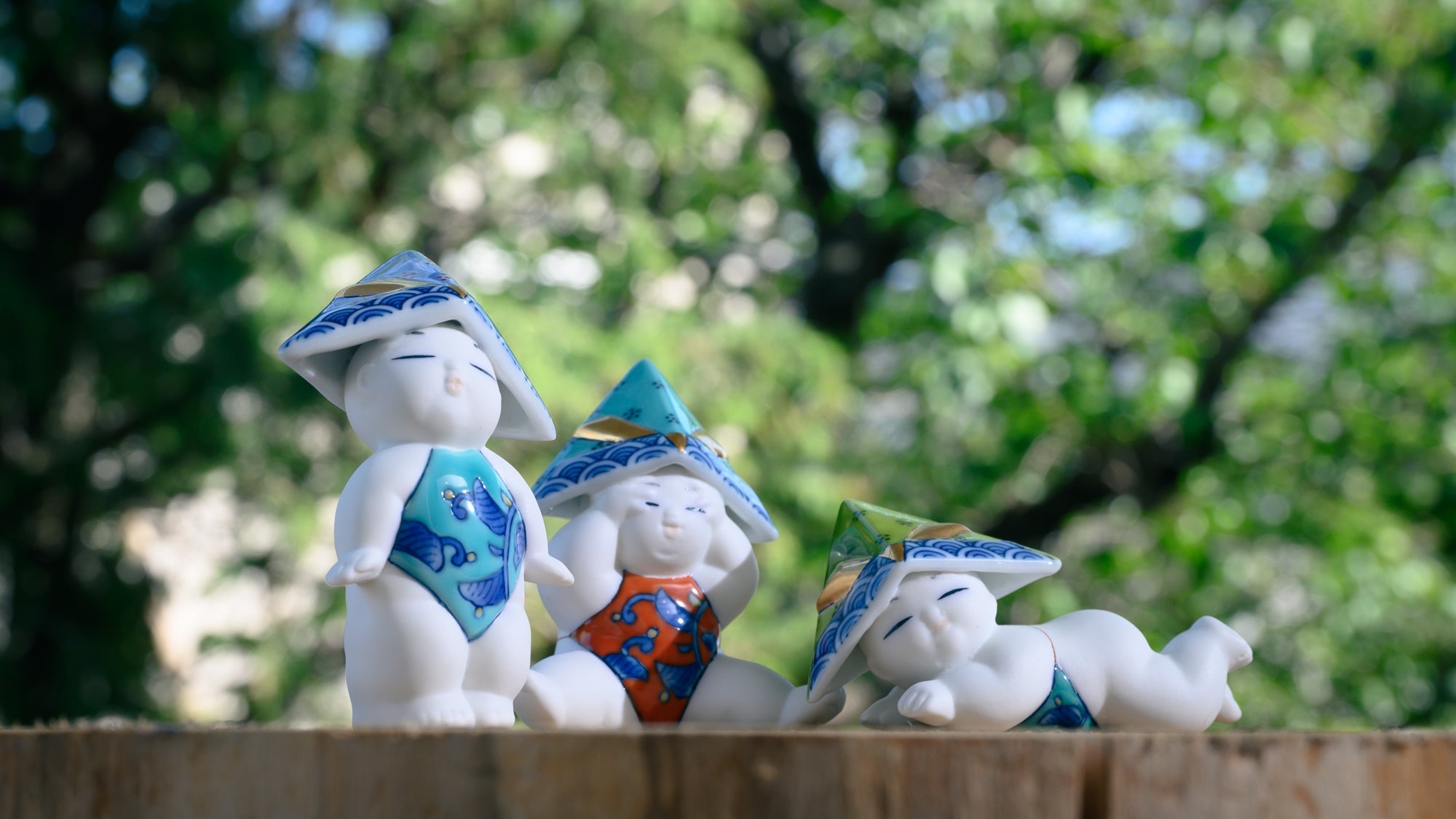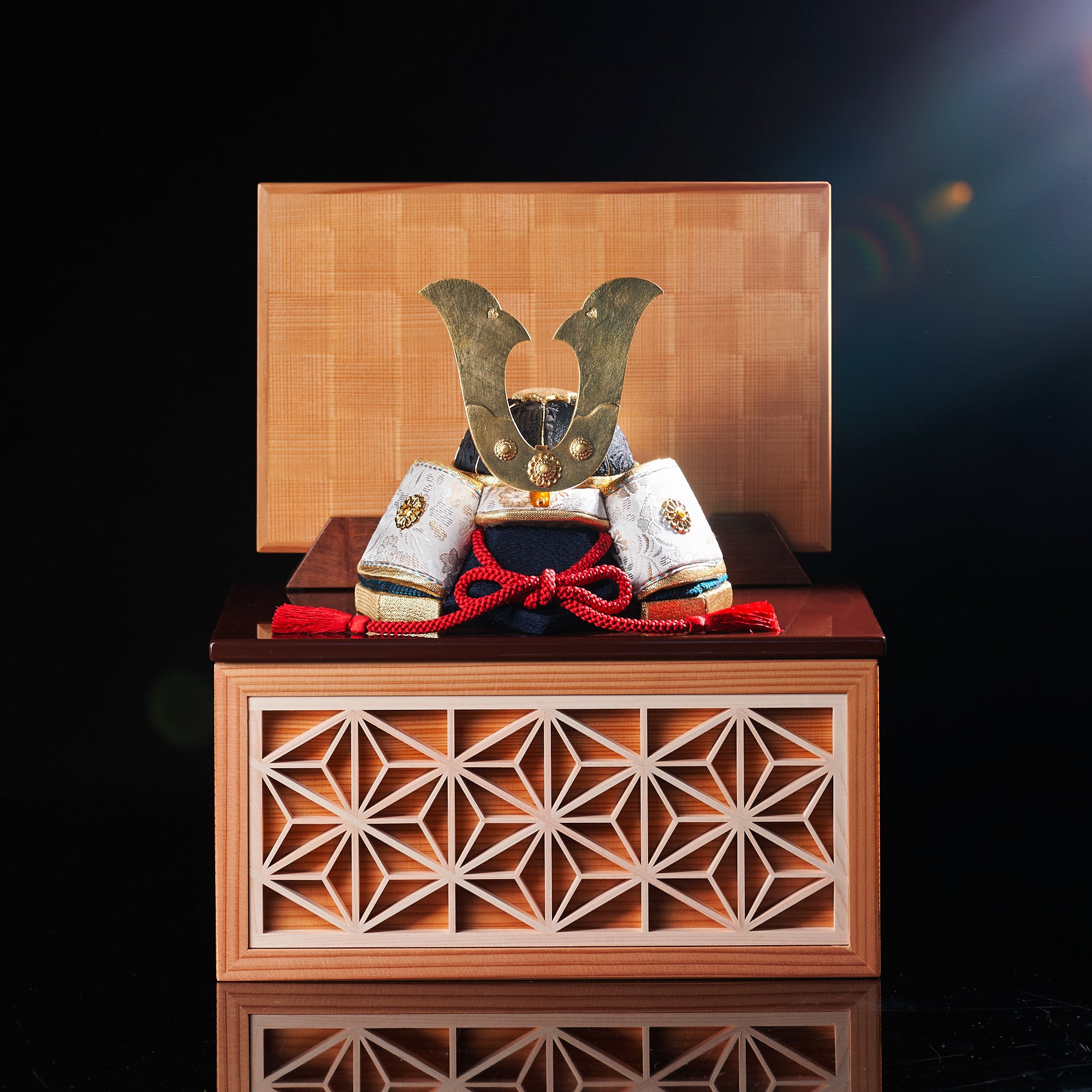
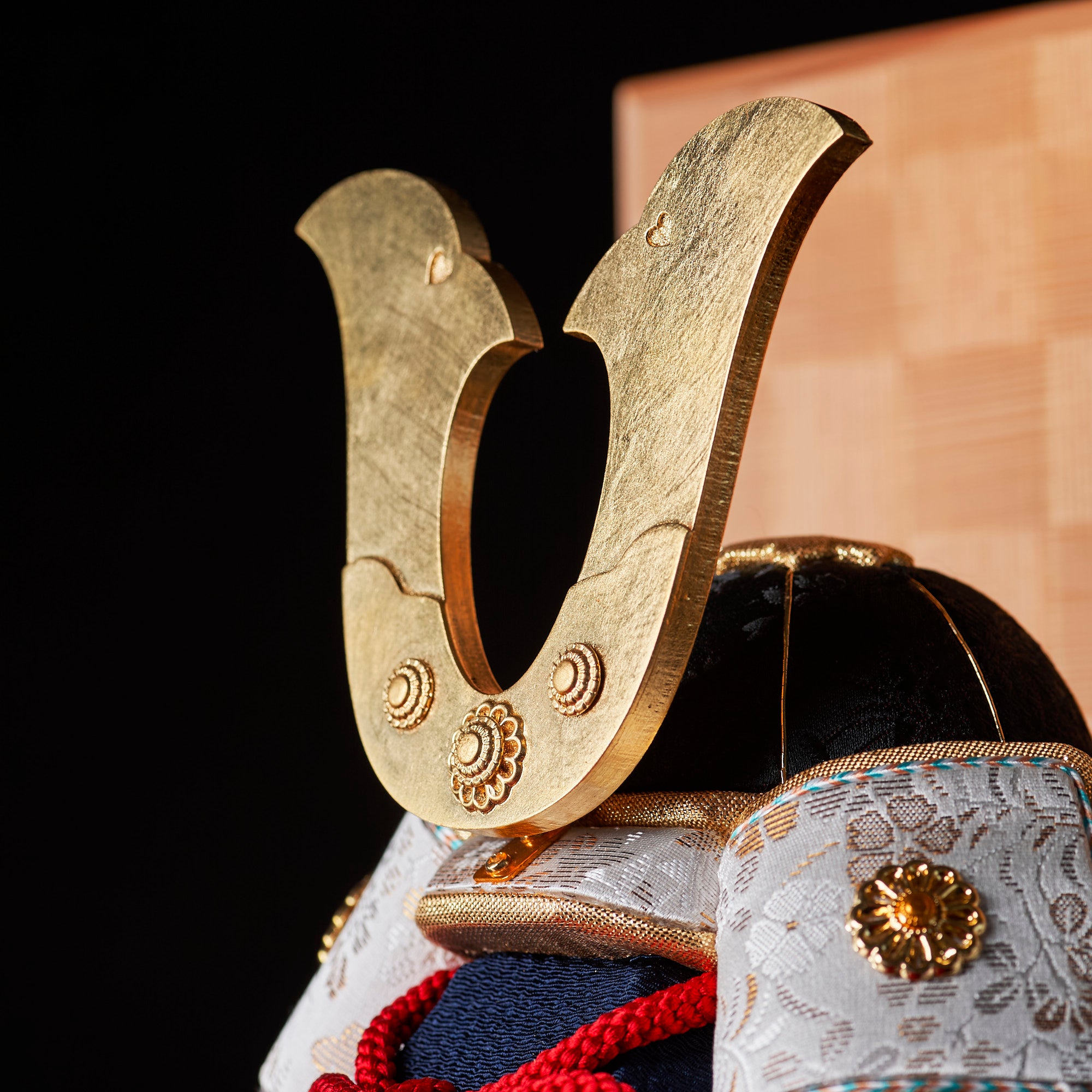

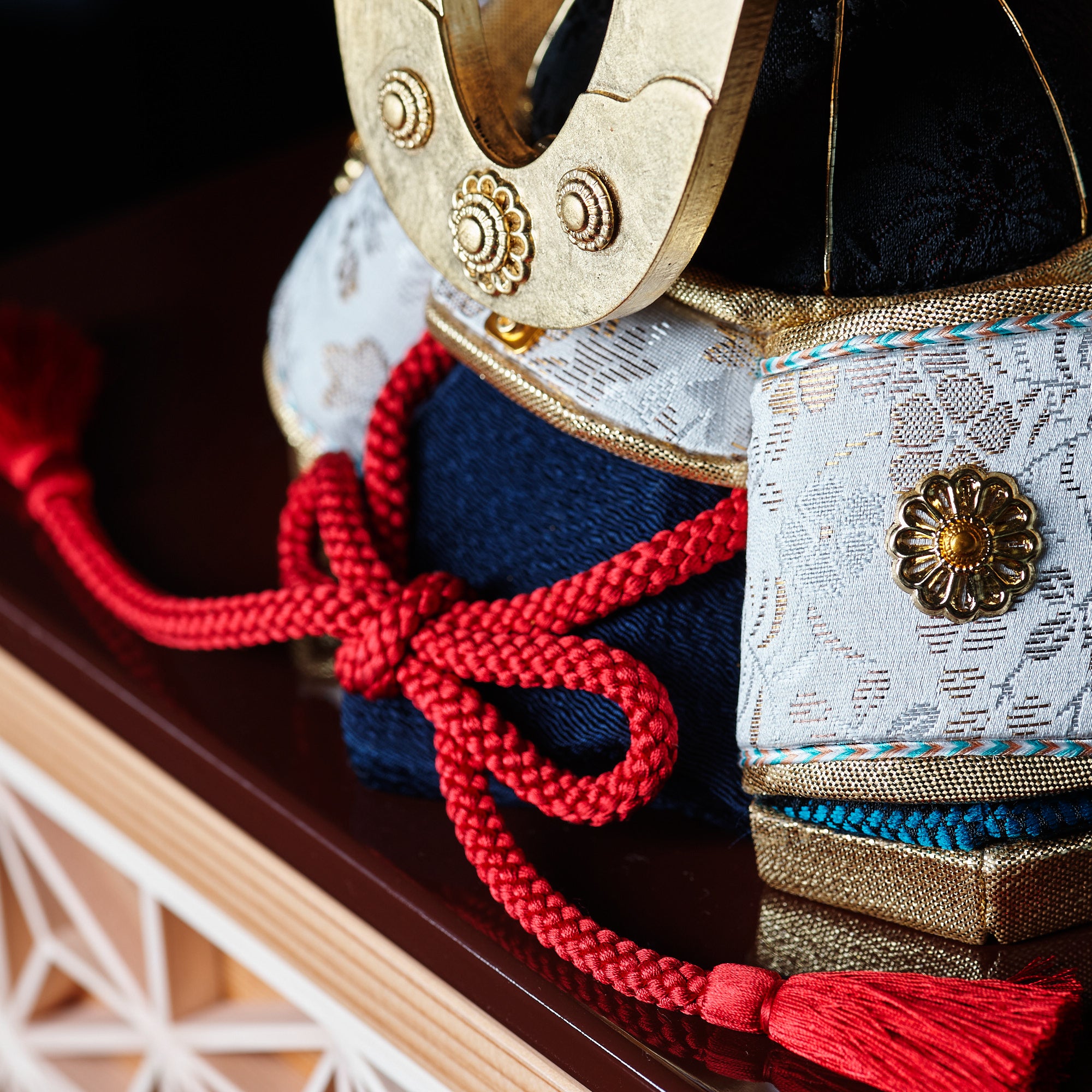
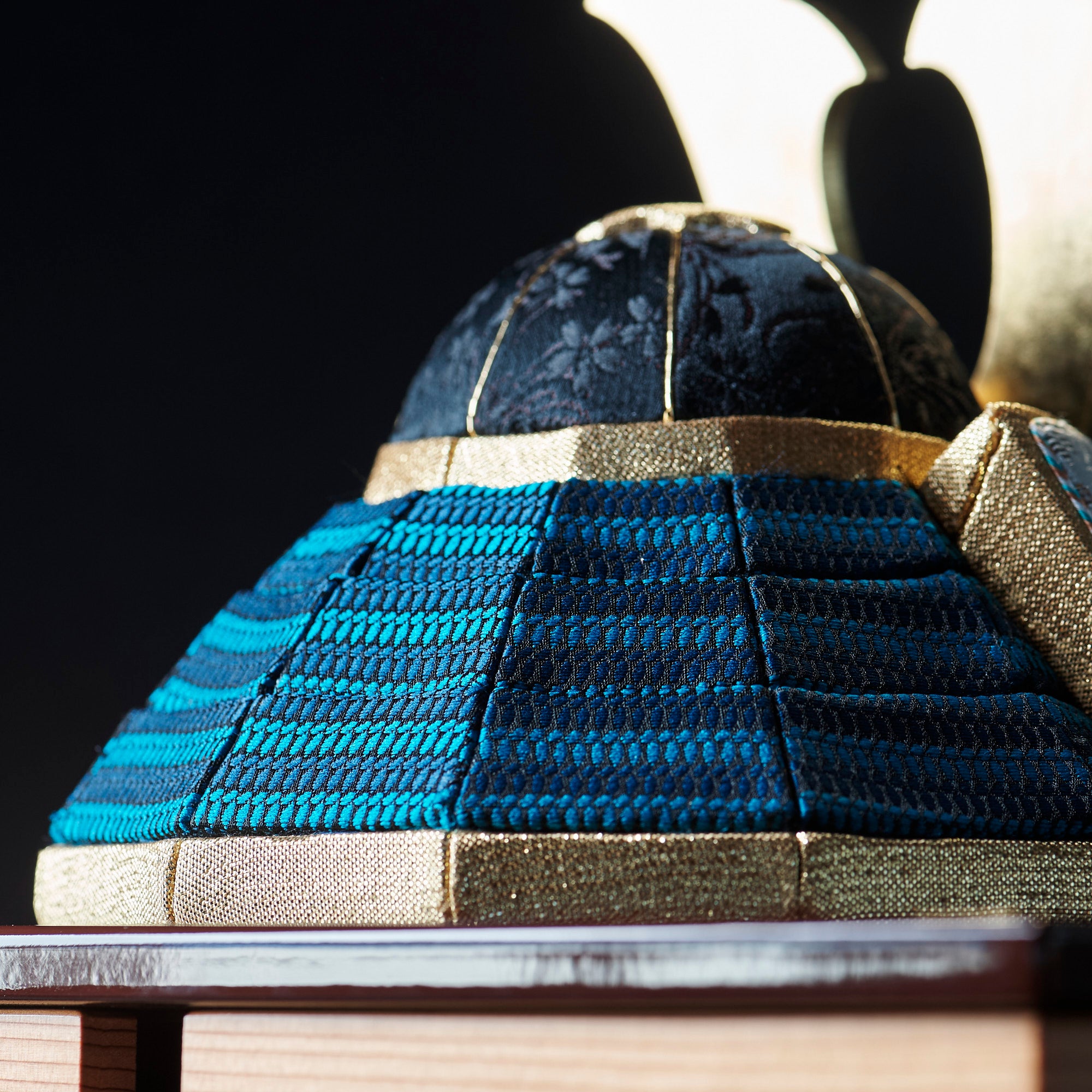
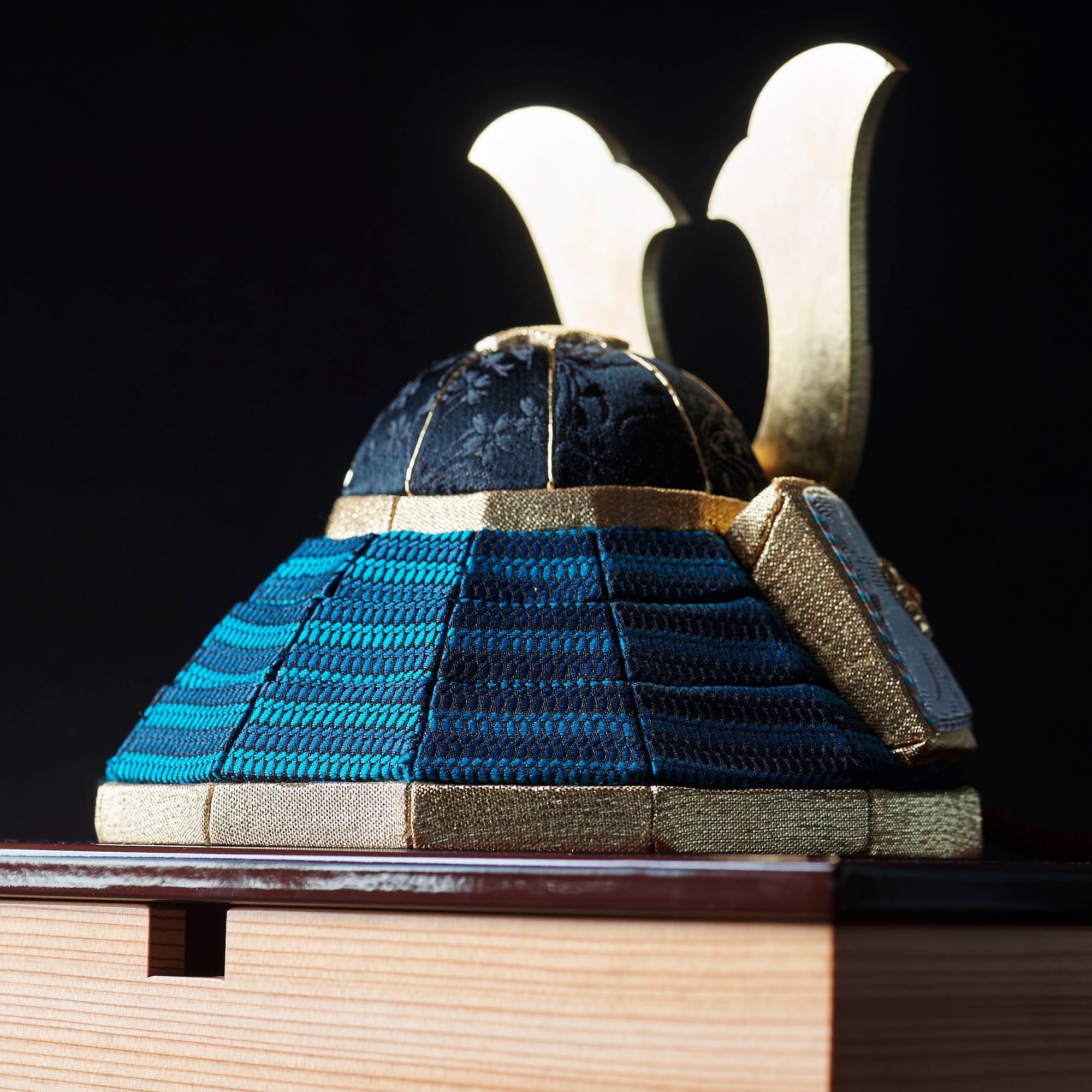
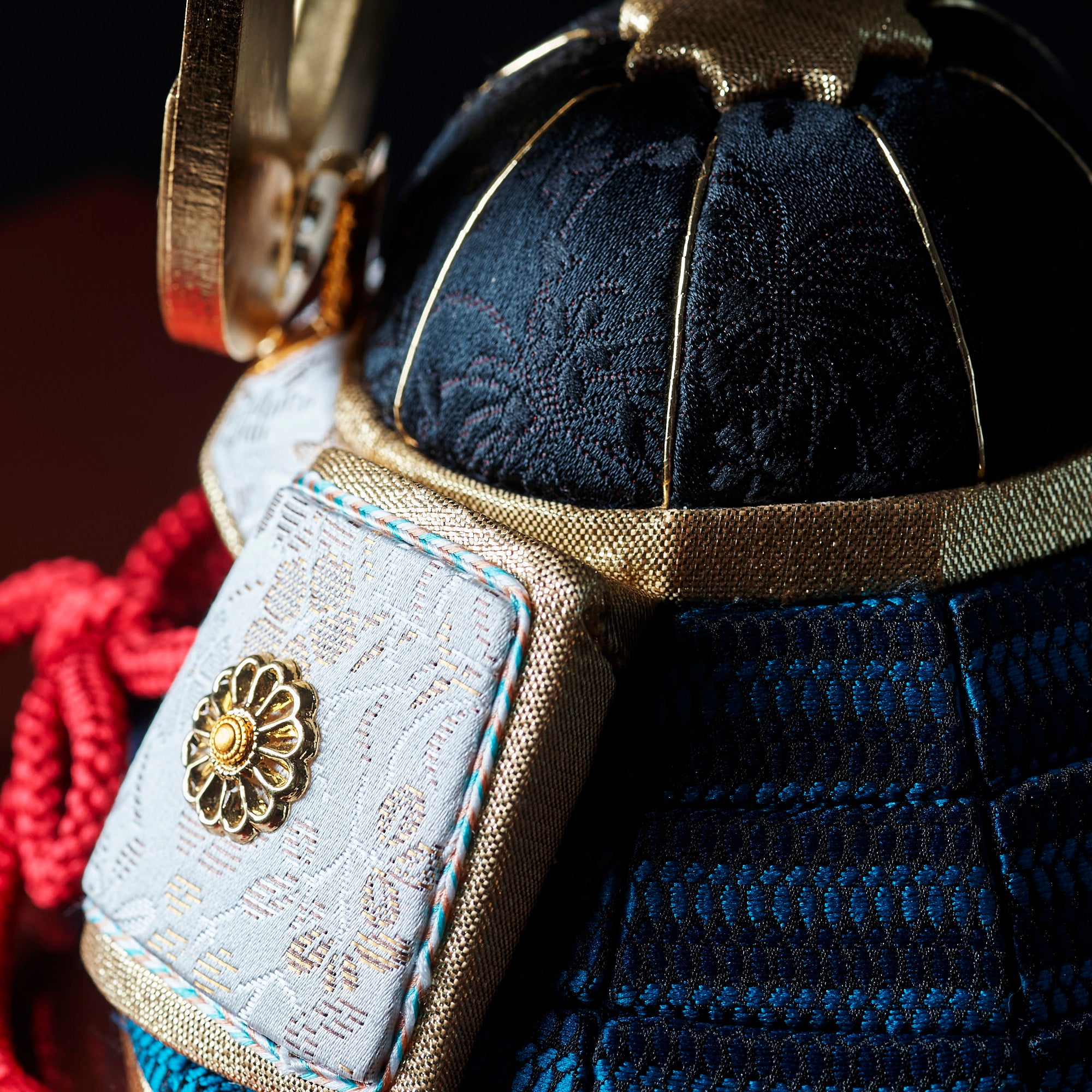
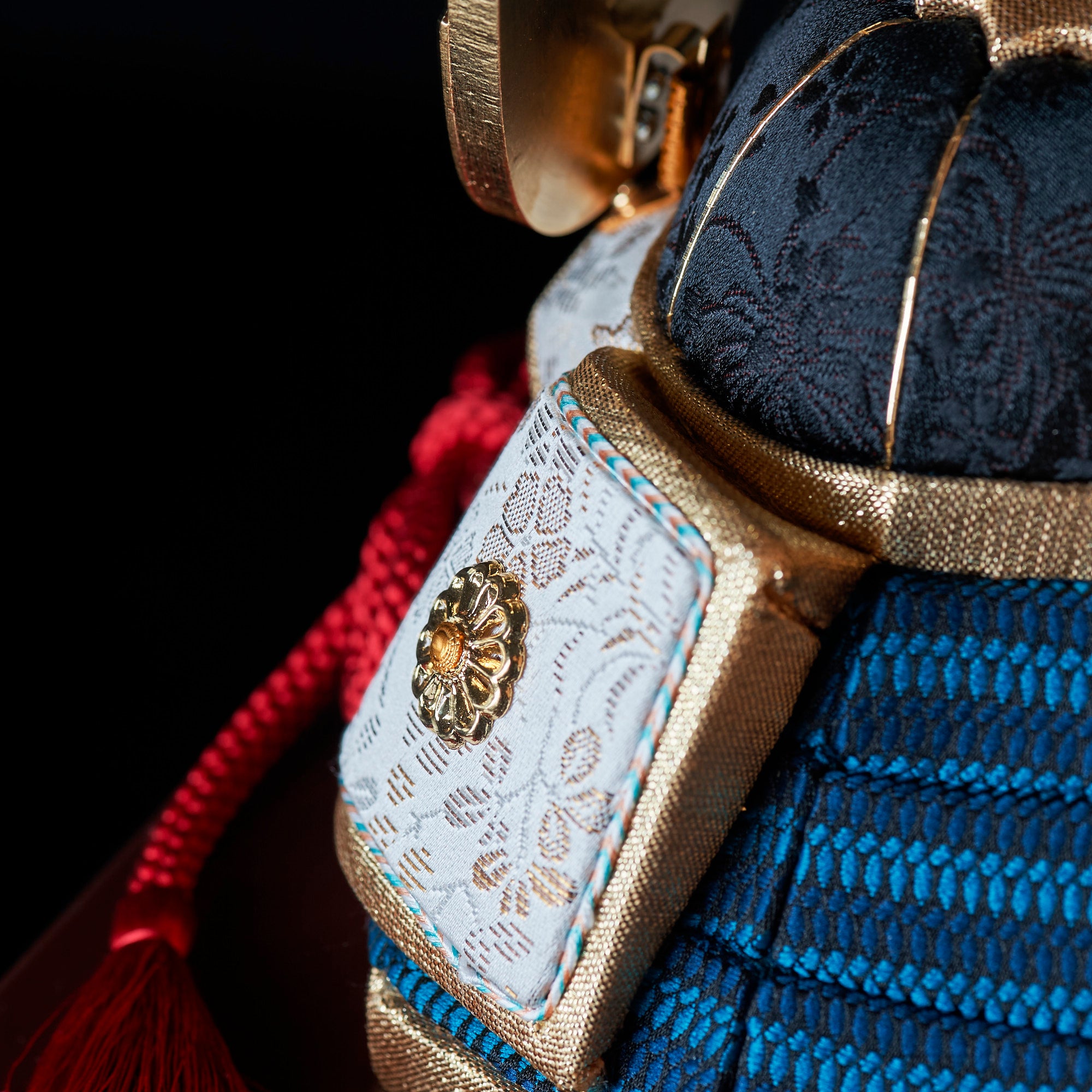
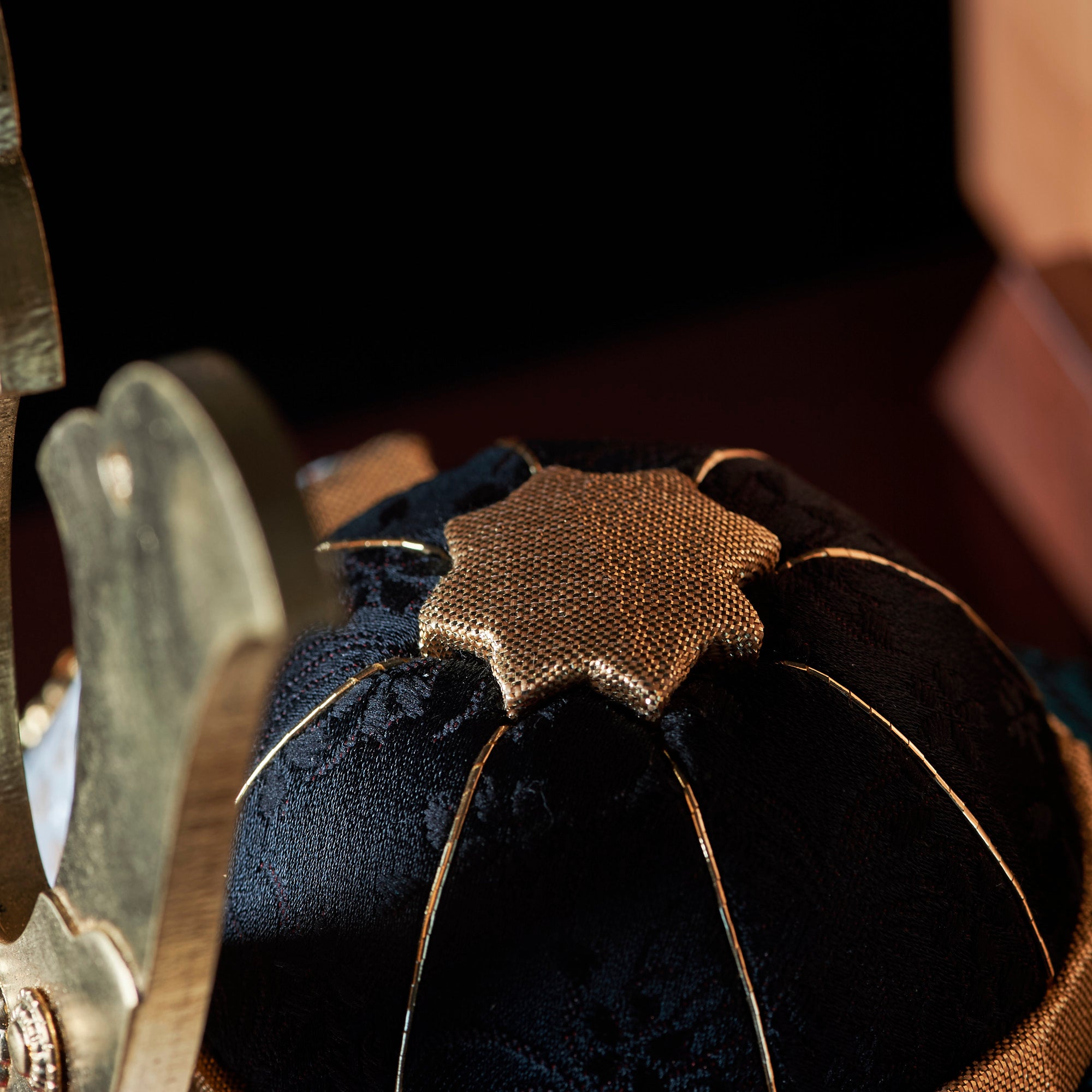

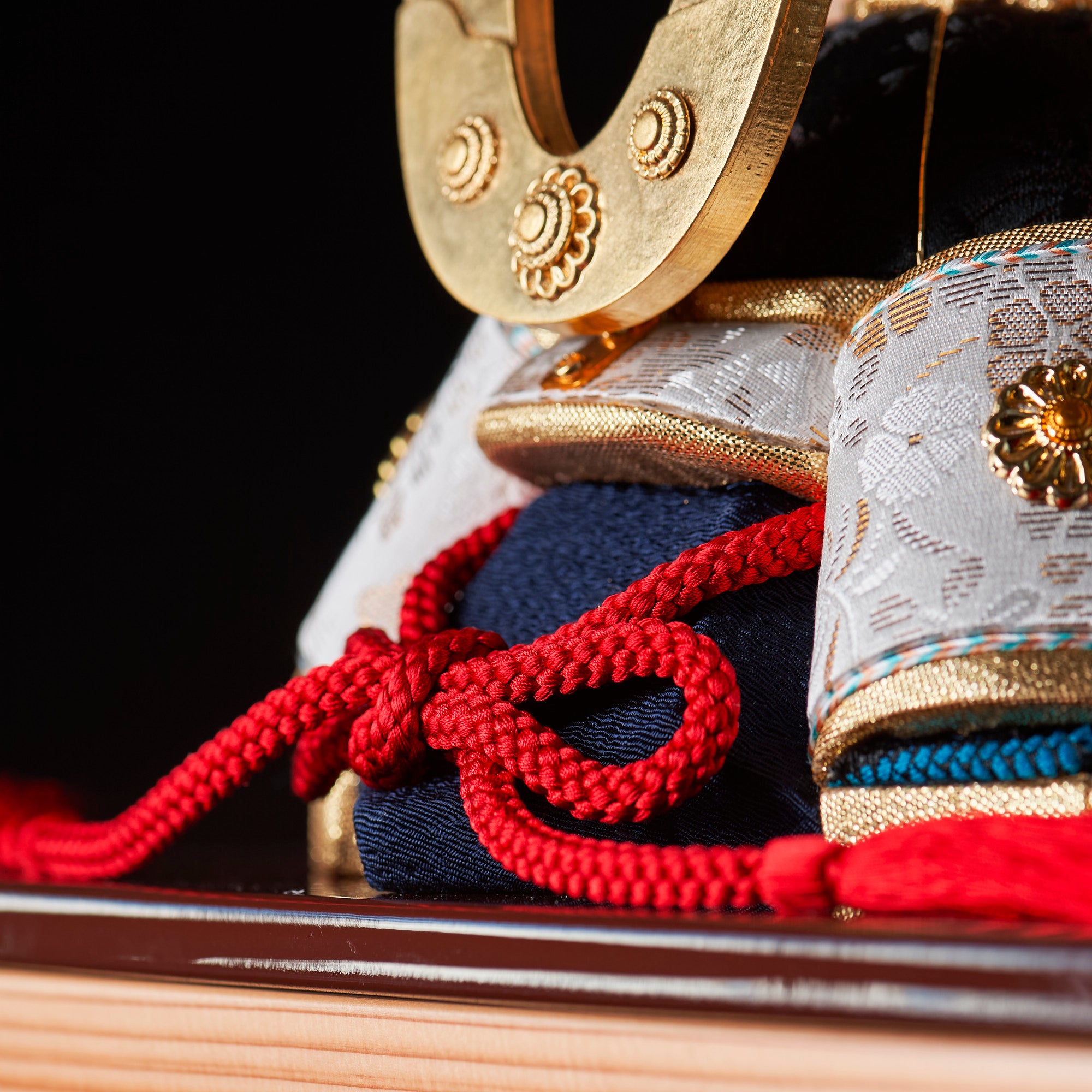
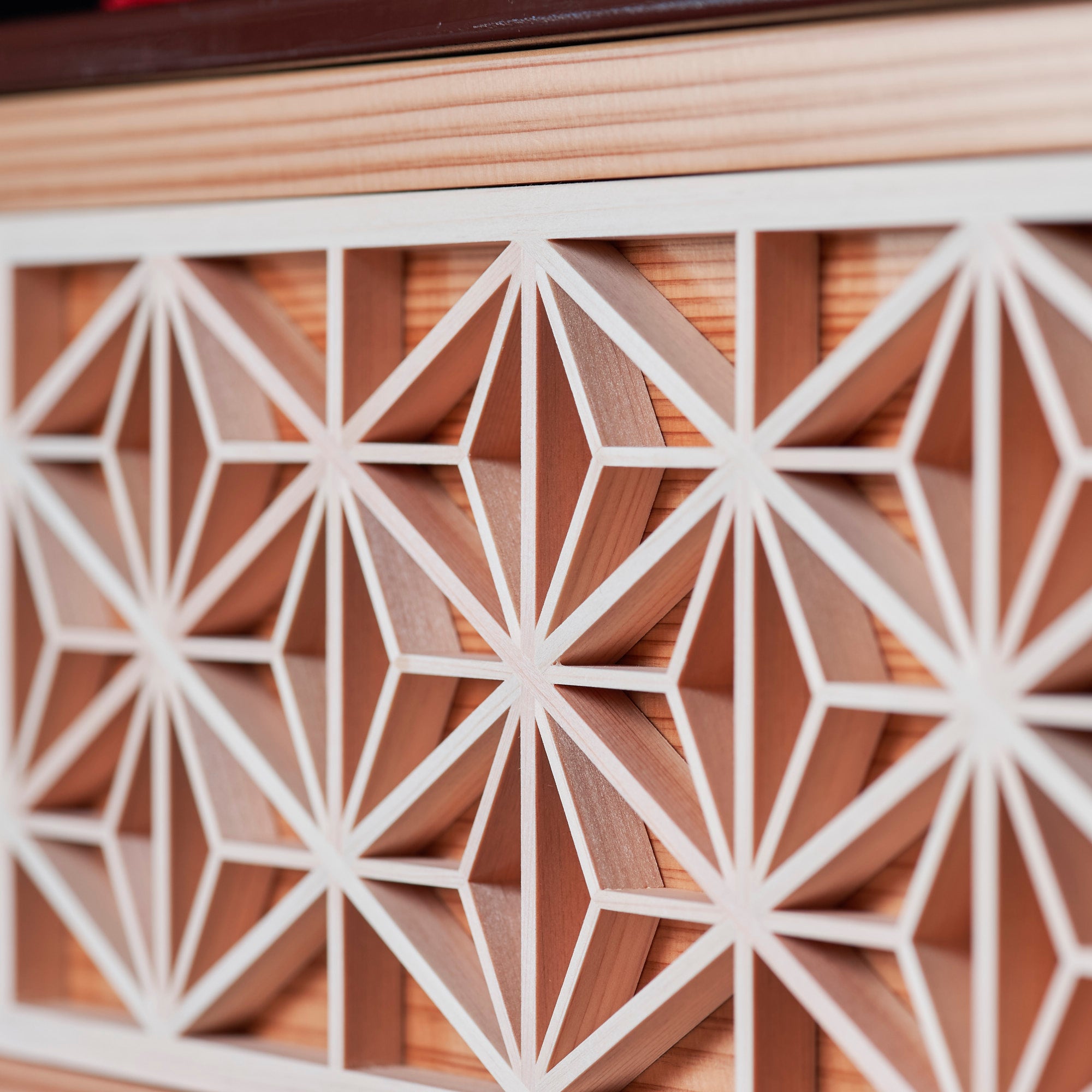
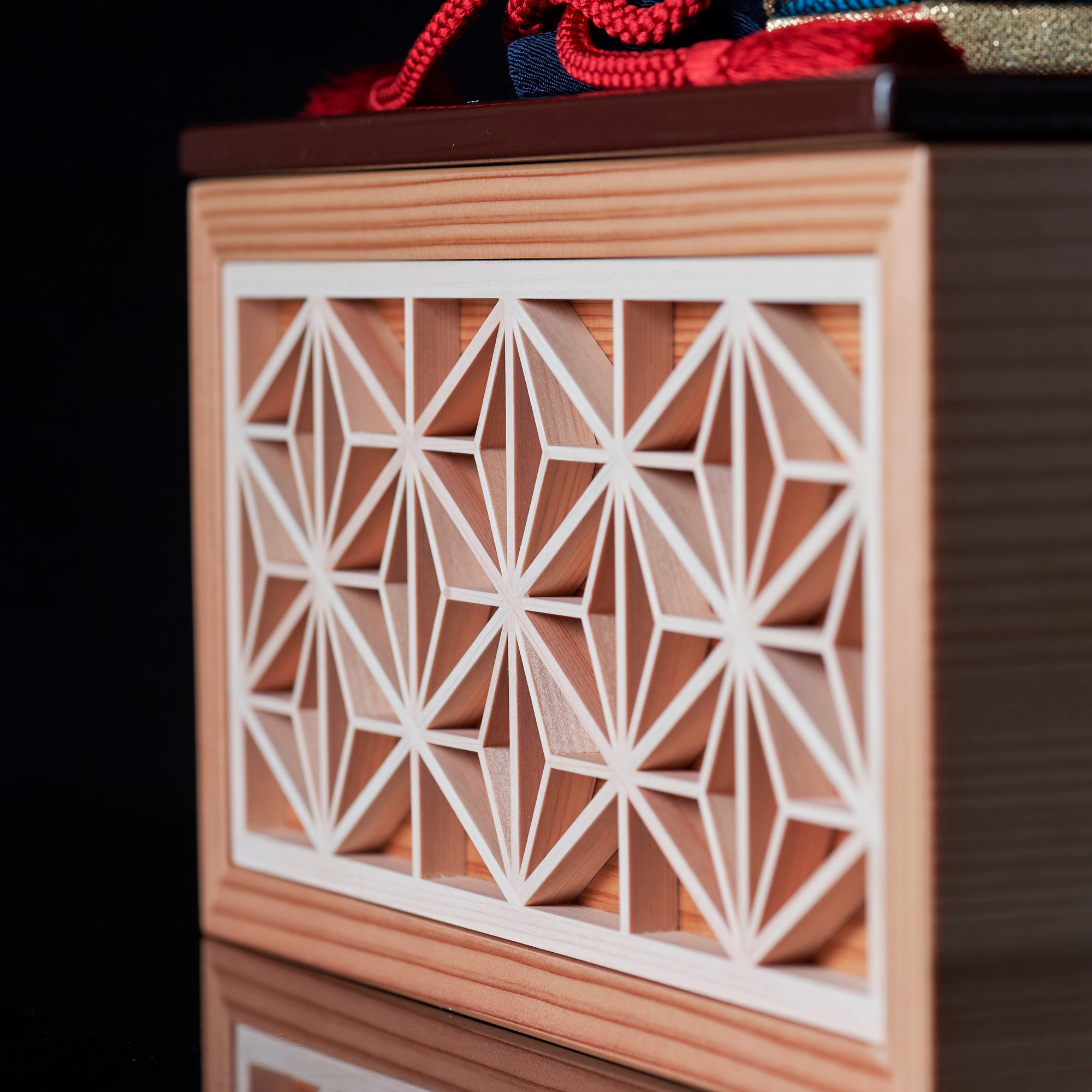
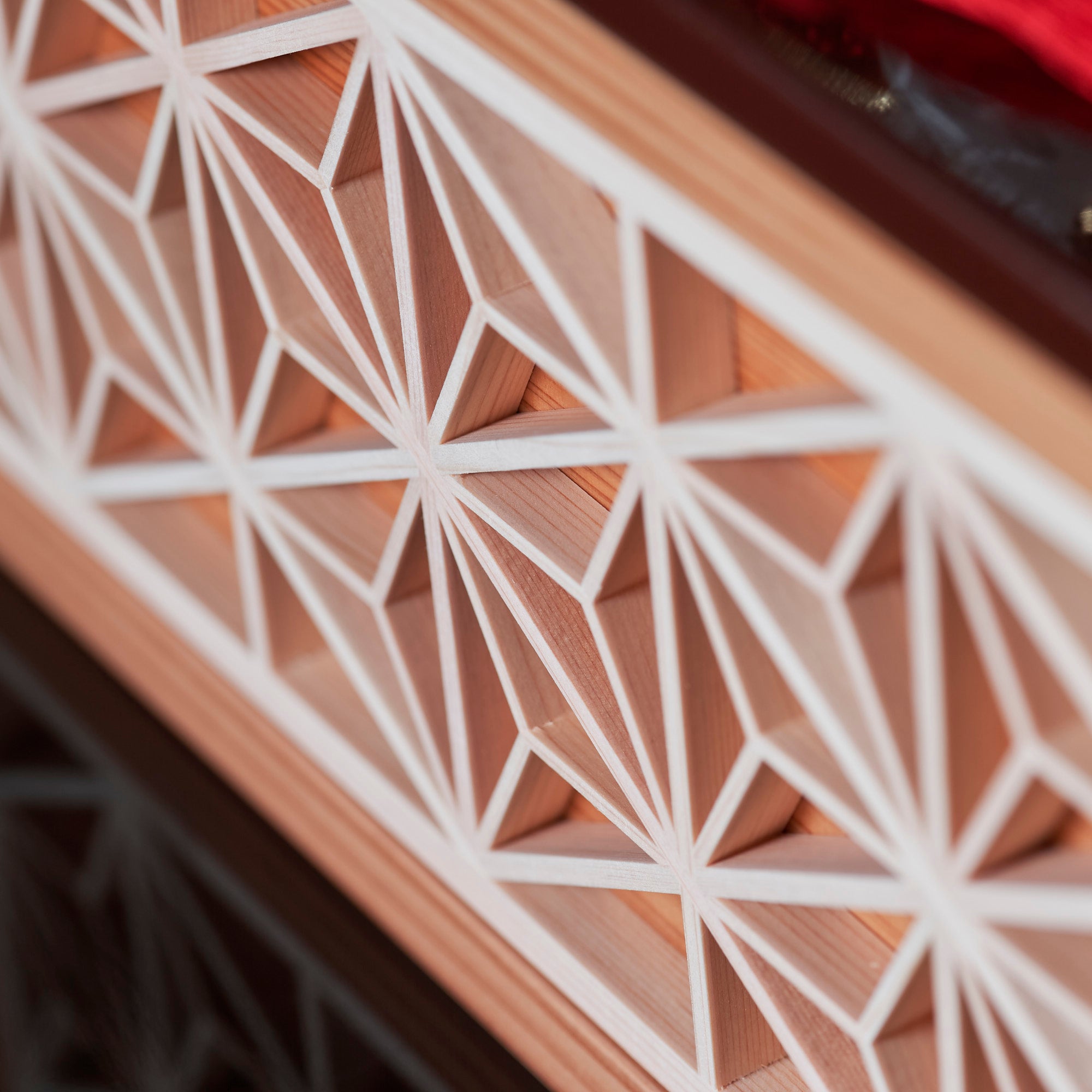
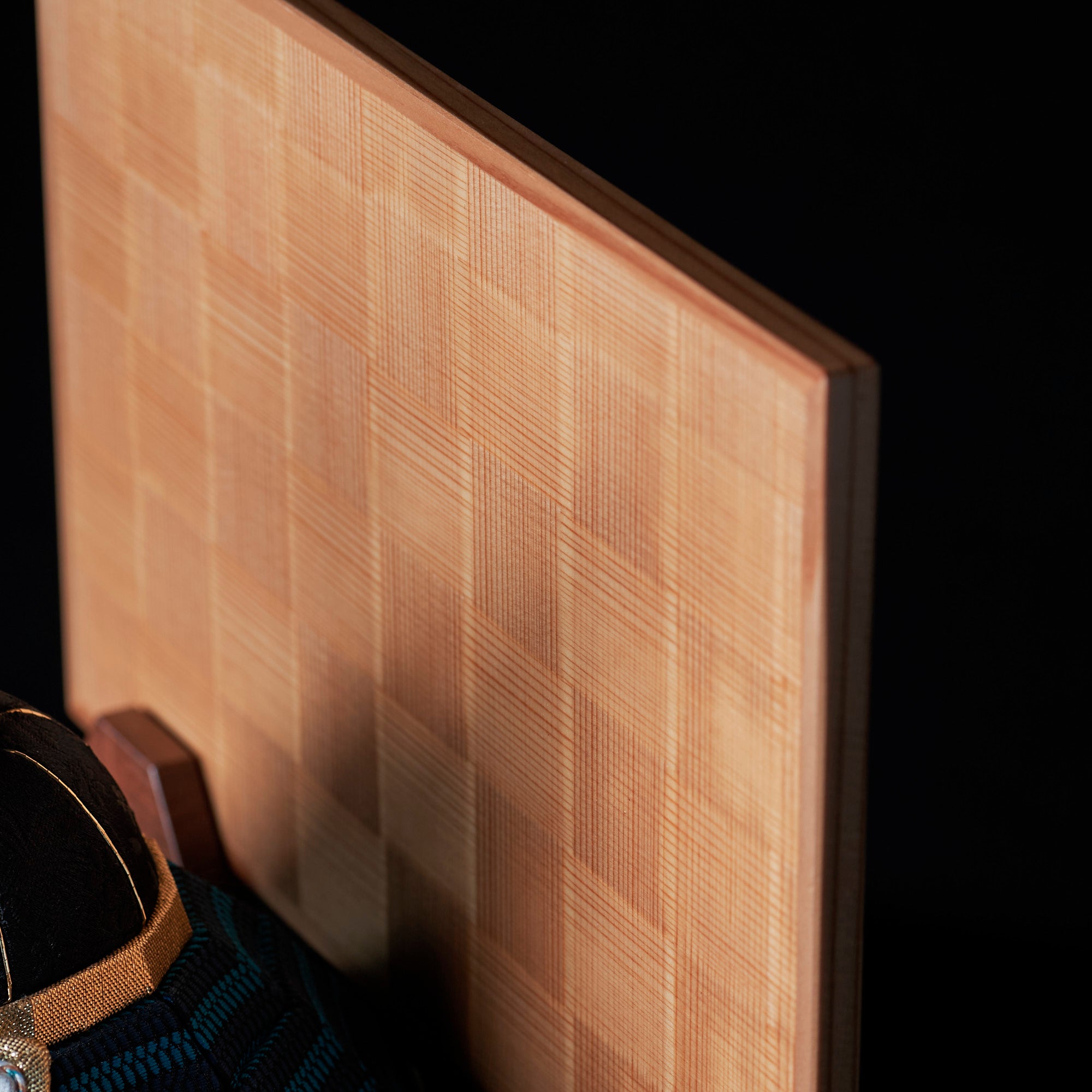
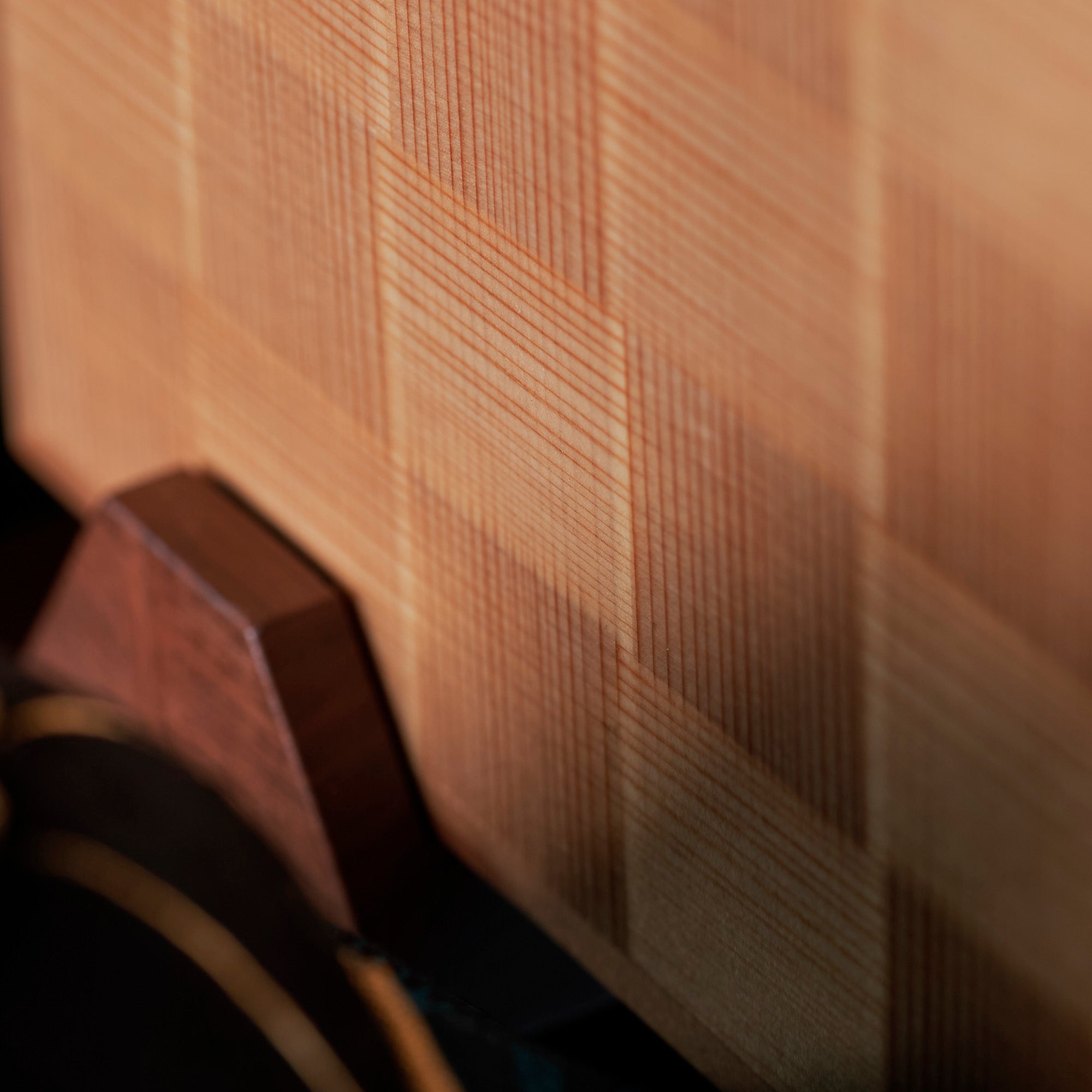
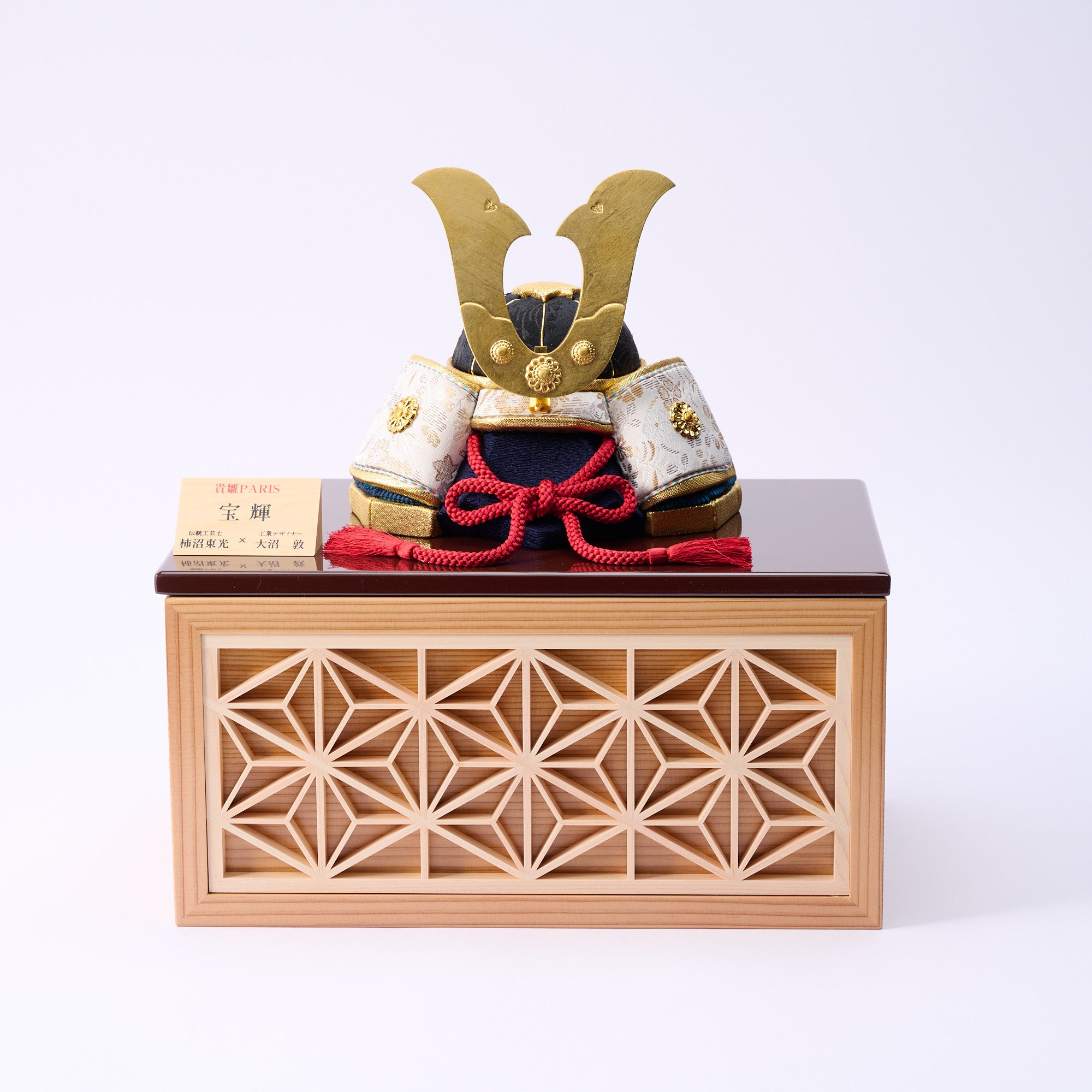
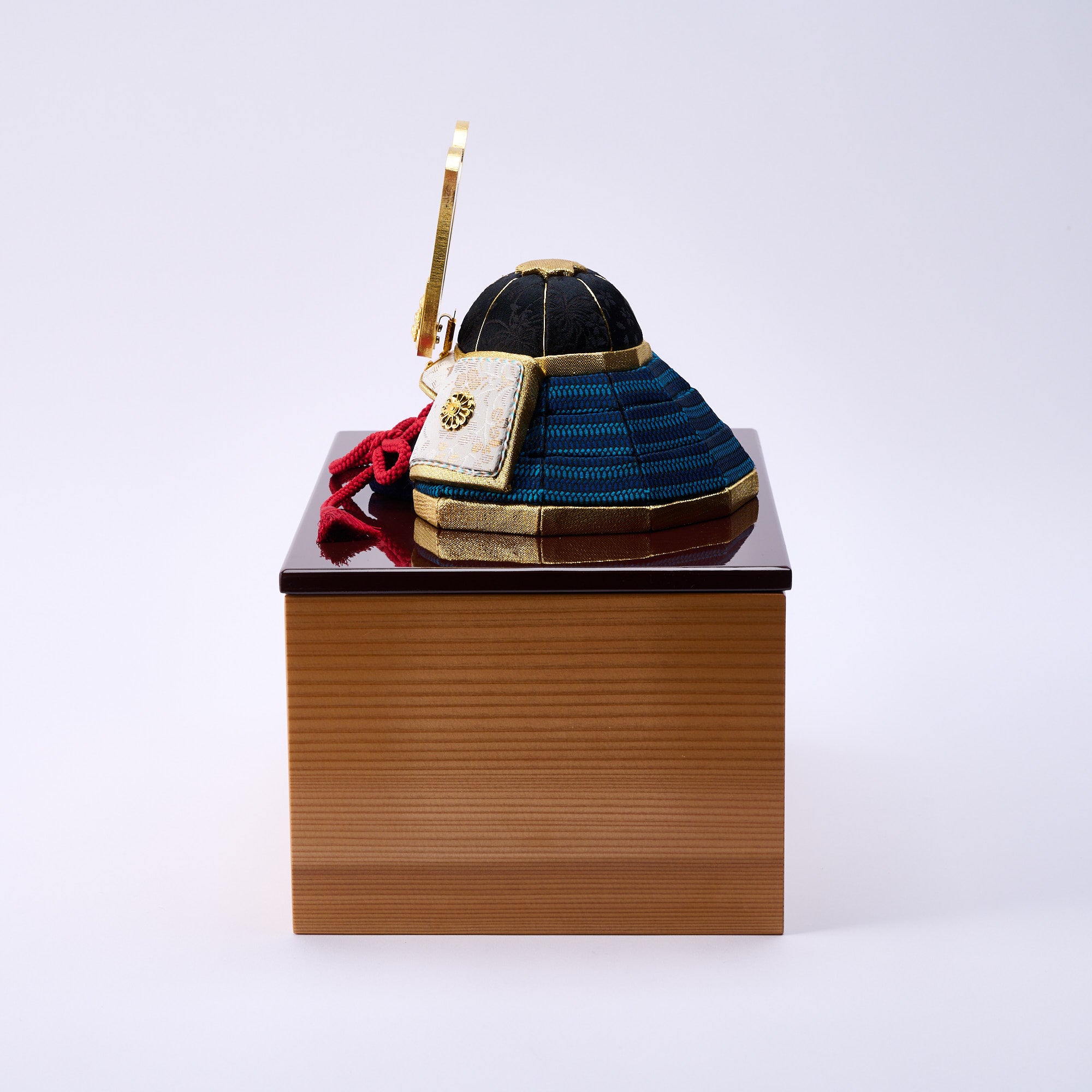
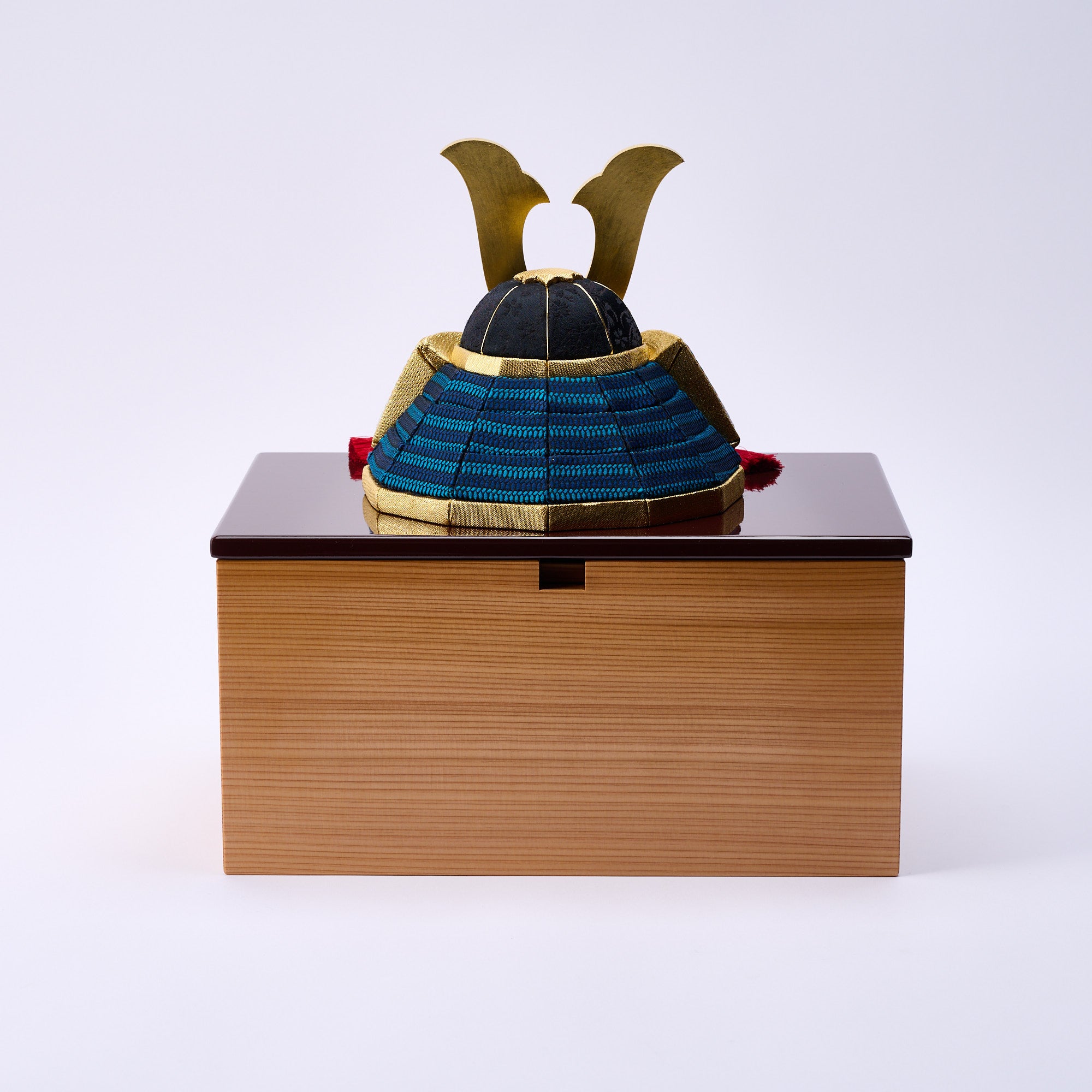
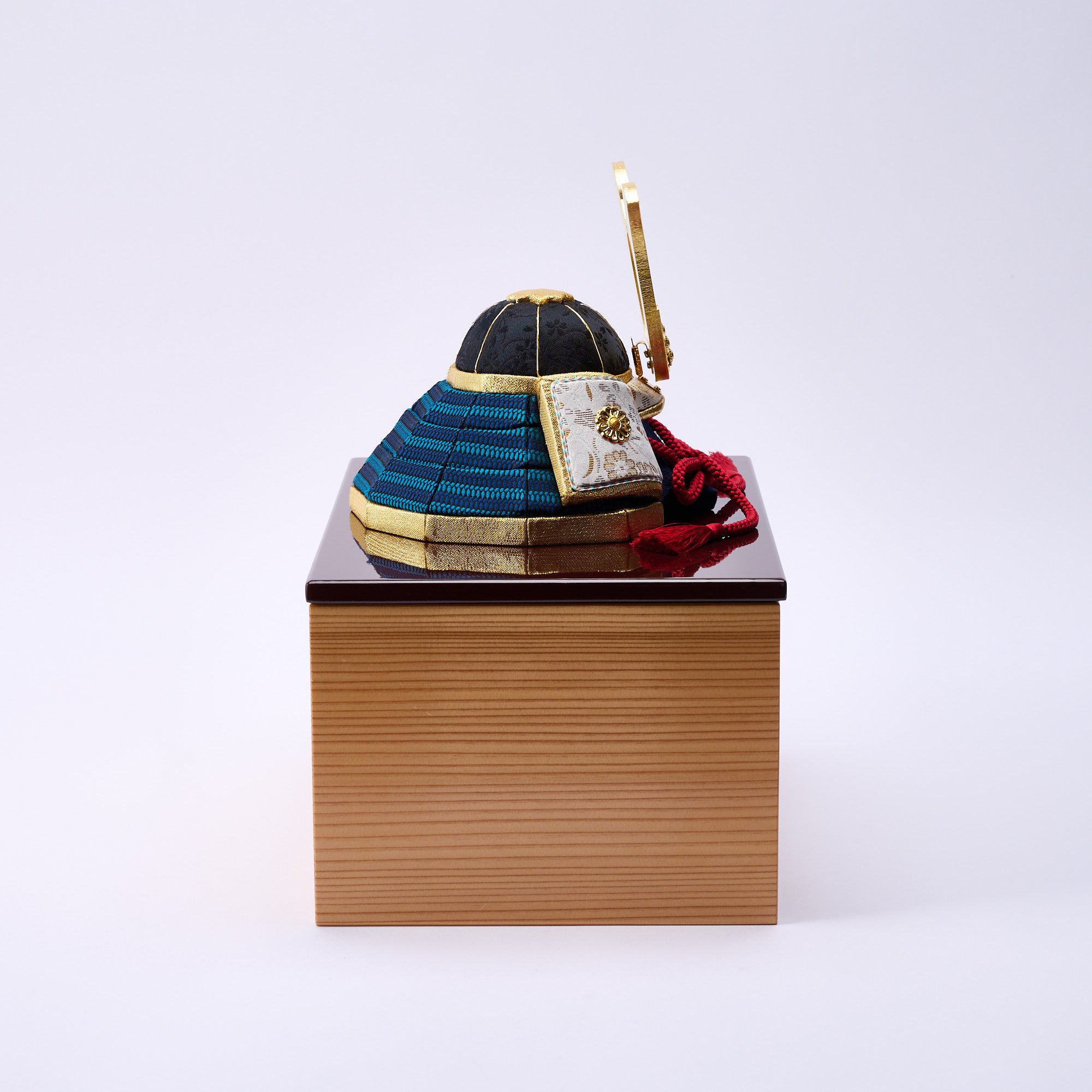
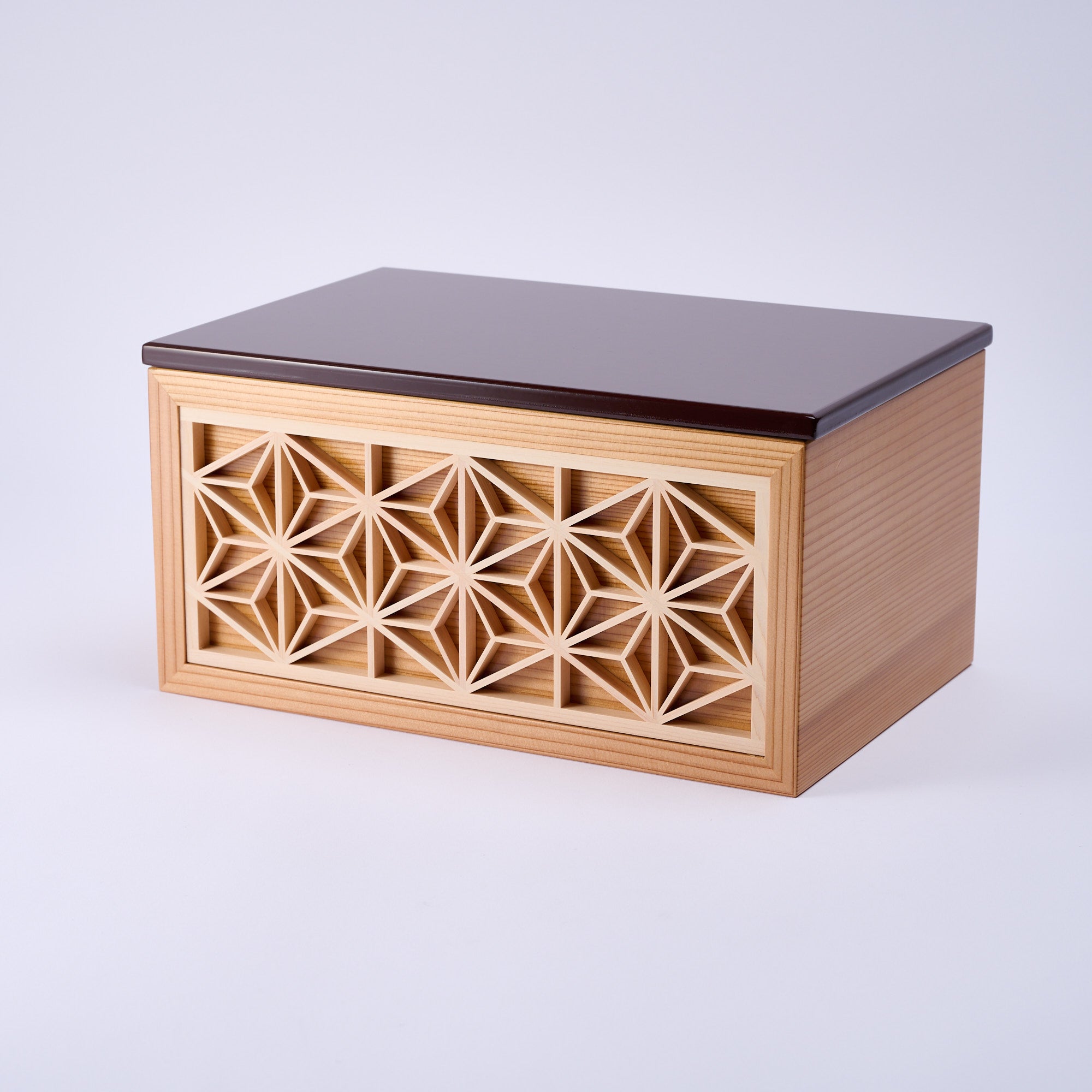
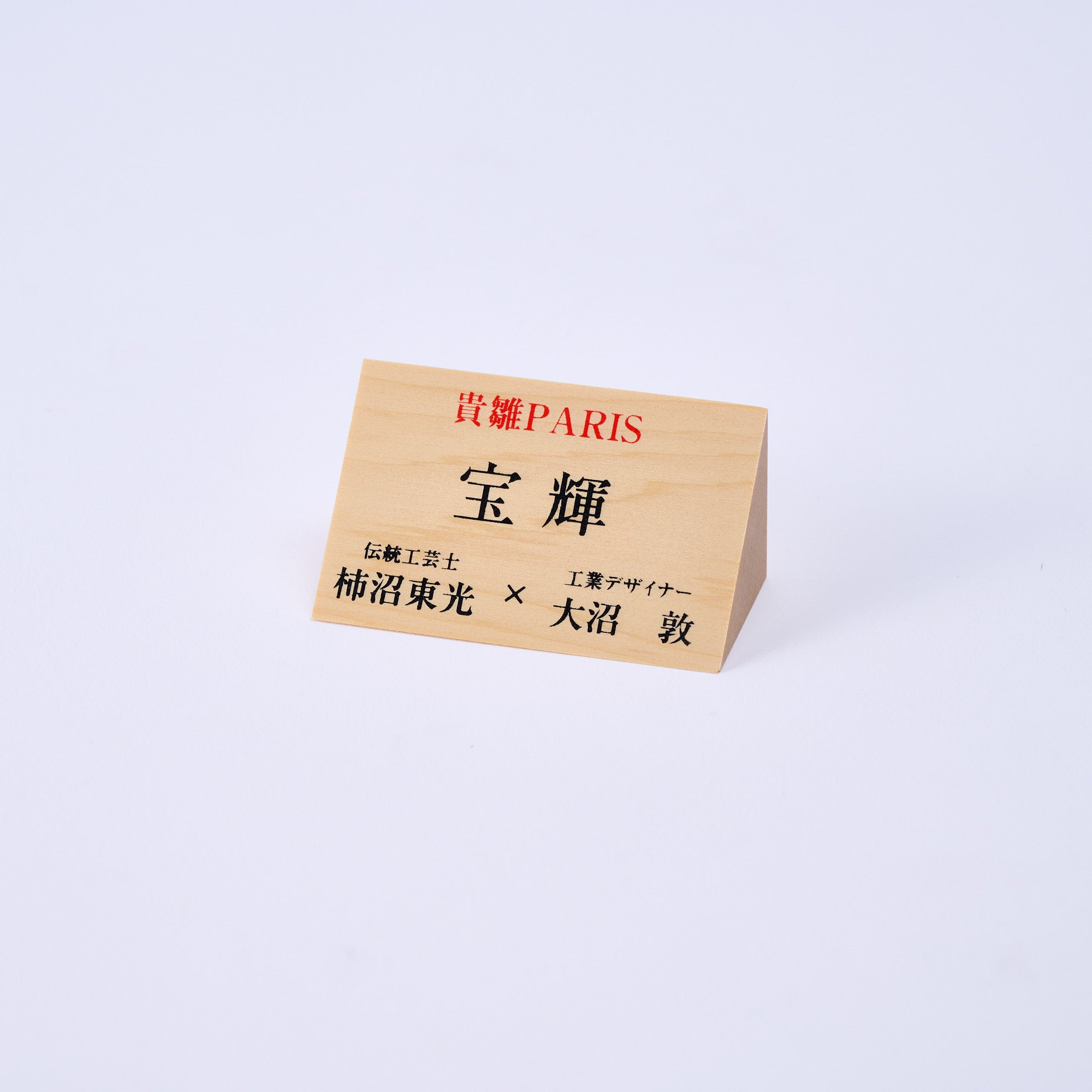
Hoki Kabuto Samurai Helmet Ornament
Estimated Shipping Widget will be displayed here!
This kabuto samurai helmet ornament is meticulously handcrafted by skilled artisans using the traditional kimekomi technique. Carefully selected fabrics are combined with precision, ensuring that every detail is perfected. The name “Hoki” literally means “treasure” and “radiance” in Japanese, embodying an air of refined elegance and nobility.
Samurai helmets, or kabuto, were originally worn for protection in battle and symbolize safeguarding one’s life. In Japan, this symbolism carries into Tango-no-Sekku, Boys' Day, celebrated on May 5th, when families display kabuto ornaments in their homes to wish for their children's safety, health, and strong growth.
This samurai helmet ornament features refined, understated patterns throughout, giving it a distinctly traditional presence. The fukikaeshi, which flares out on both sides of the helmet, was designed to protect the face by deflecting sword strikes coming from the sides. Here, it is adorned with chrysanthemum motifs, a symbol of nobility and grace. Meanwhile, the maedate, the decorative crest affixed to the front of the kabuto, was intended to assert individuality and presence on the battlefield. It, too, is embellished with elegant chrysanthemum designs.
The decorative stand is just as refined, with the front adorned with a hemp leaf motif symbolizing a wish for children's growth. The rectangular screen, crafted from Akita cedar in a checkered pattern, complements the stand. Together, they serve not only as a display but also as a functional storage solution.
DETAILS
| Quantity | 1 samurai helmet, 1 decorative stand, 1 screen, 1 wooden name plate |
| Size |
[Samurai helmet] L 17.5 cm (6.9 in) x W 17.5 cm (6.9 in) x H 17 cm (6.7 in) [Decorative stand] L 20.5 cm (8.1 in) x W 30.5 cm (12 in) x H 35 cm (13.8 in) [Screen] L 18 cm (7.1 in) x W 28 cm (11 in) |
| Material |
[Samurai helmet] MDF (Medium Density Fiberboard), fabric [Decorative stand, screen] MDF (Medium Density Fiberboard) |
| Package Type | Paper box |
Maker / Brand
Kakinuma Ningyo, established in 1950, stands as a beacon of excellence in the realm of Edo Kimekomi dolls, a distinguished form of traditional Japanese craftsmanship. From classic hina dolls and Boys' Day dolls to imaginative modern creations like maneki neko (lucky cats) and daruma, each piece seamlessly blends age-old artistry with a touch of contemporary elegance. With a commitment to innovation while honoring tradition, Kakinuma Ningyo continues to create exceptional works that bridge the past and present in Japanese craftsmanship.
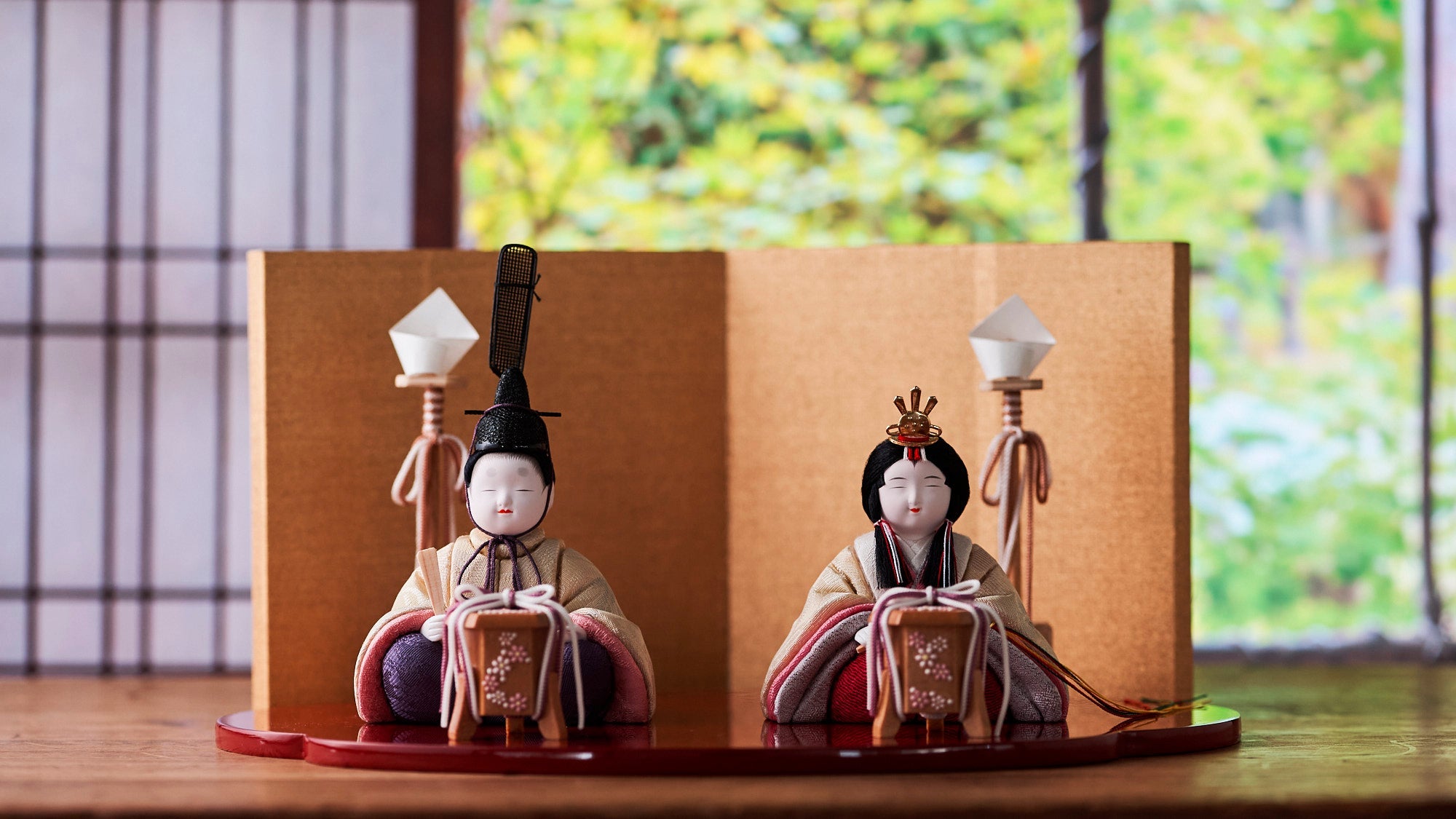
Crafts
Edo Kimekomi dolls are small wooden dolls made of paulownia wood and dressed in traditional Japanese silk textiles.
Originating in Kyoto, Kimekomi dolls were introduced to Edo (present-day Tokyo), where they developed in their own unique style. These extremely finely crafted figures are beloved as souvenirs rooted in Japanese traditions.
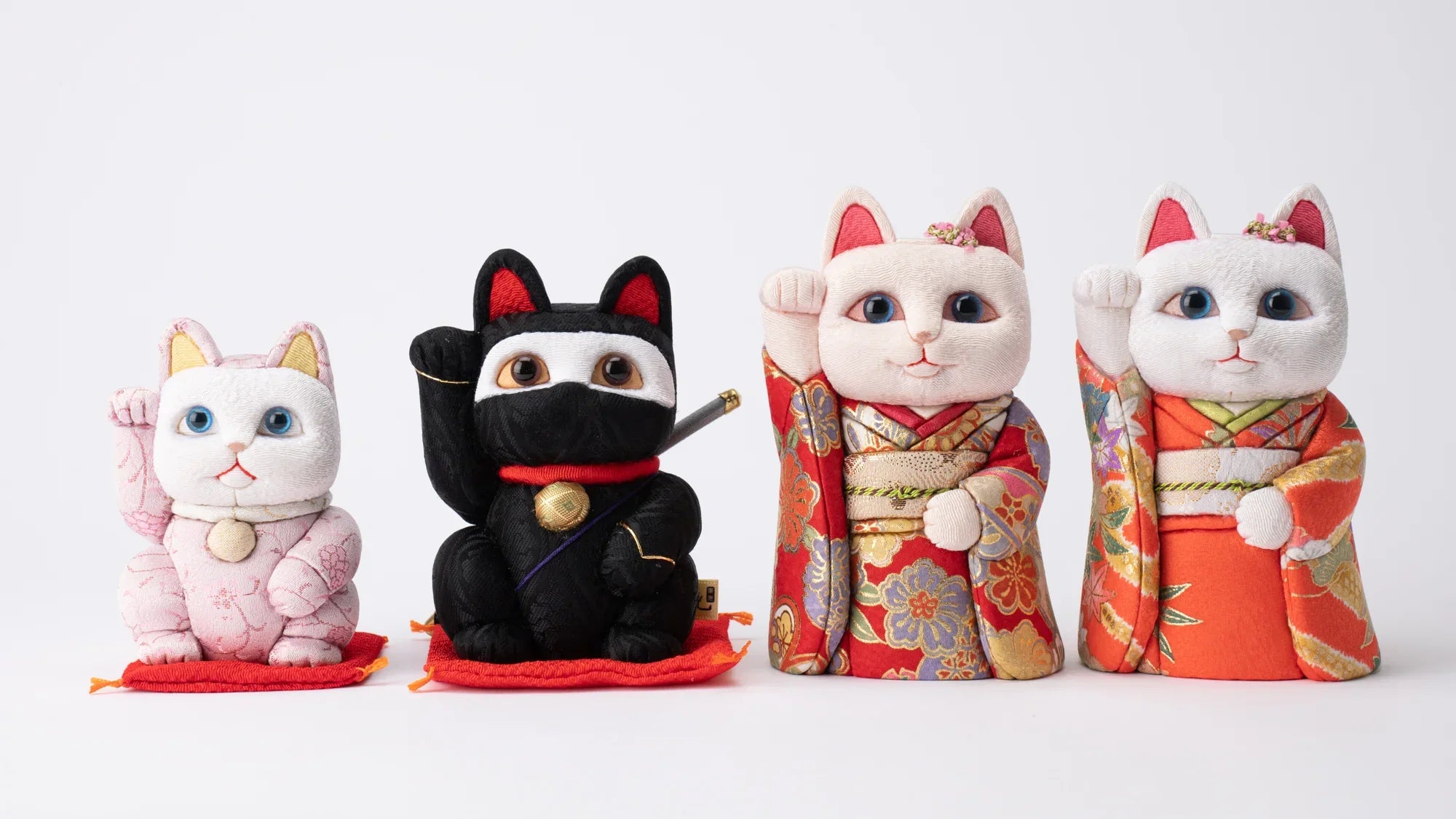
Choose options






















Estimated Shipping Widget will be displayed here!
Samurai Helmets
Samurai helmets, known as kabuto, are traditional Japanese headpiece originally crafted to protect warriors in battle. In Japan, the kabuto not only served as protection but also symbolized a samurai's dignity and individuality.
This symbolism lives on in Tango-no-Sekku—also known as Boys’ Day, now celebrated as part of Children’s Day on May 5th—when families display kabuto ornaments in their homes to pray for their children’s health, strength, and safety.

May Festival Dolls
May Festival Dolls are dolls used to celebrate Tango-no-Sekku, also known as Children's Day or Boy's Day. The tradition originated in the Nara period (710 CE–794 CE). By the Edo period (1603 CE–1868 CE), May 5th had become a holiday and was established as Tango-no-Sekku. During this period, the festival became widely celebrated among the common people of Edo, and dolls began to be used as decorations.
The placement of these dolls signifies the family's collective celebration of a boy's birth, embodying hopes for the child to avoid illnesses, accidents, and other misfortunes, and to grow up strong and healthy. Armors and helmets are displayed as talismans for bodily protection, expressing wishes for their safety, health, and robust growth.
